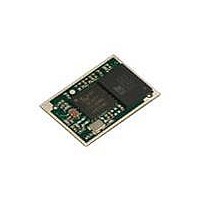DVK-BTM411 Laird Technologies, DVK-BTM411 Datasheet - Page 40

DVK-BTM411
Manufacturer Part Number
DVK-BTM411
Description
BLUETOOTH EVAL BOARD BTM411
Manufacturer
Laird Technologies
Type
Transceiverr
Specifications of DVK-BTM411
Frequency
2.4GHz
Wireless Frequency
2.402 GHz to 2.48 GHz
Interface Type
UART
Data Rate
2.1 Mbps
Operating Voltage
3 V to 3.3 V
Antenna
Multilayer Ceramic Integrated
Operating Temperature Range
- 30 C to + 70 C
Output Power
4 dBm
Technology/ Type
Development Kit
For Use With/related Products
BTM411
Lead Free Status / RoHS Status
Lead free / RoHS Compliant
Lead Free Status / RoHS Status
Lead free / RoHS Compliant, Lead free / RoHS Compliant
Other names
DVK-BTM411
Available stocks
Company
Part Number
Manufacturer
Quantity
Price
Company:
Part Number:
DVK-BTM411-02
Manufacturer:
LAIRD
Quantity:
2
BTM410/411
Bluetooth
AT COMMAND SET
REFERENCE
40 www.lairdtech.com
®
AT Data Module
Command
“AT+HFH”;”ATH111E”
“AT+HFGH”;”ATH111F”
“AT+DUH”;”ATH1103”
6. Page Scan / Inquiry Scan Interval and Window
7. Sniff Mode
Page scanning means being connectable. Inquiry scanning means being discoverable. With the following
S registers the power consumption of the BTM can be influenced. However, lower power consumption
means longer connection establishment time and longer time until a BTM is discovered by other devices.
The page scan window defines the time for the module to look out for incoming connection requests
(paging). The inquiry scan window defines the time for the module to look out for incoming inquiry
requests (device discovery). If the module is both connectable and discoverable (512=4 or AT+BTP
issued), it will mutually do page scanning and inquiry scanning as shown in Figure 3.7. If connectable
only, the module will perform page scanning only (repeatedly) and if discoverable only, then the module
will perform page scanning only.
S register 508 defines the page scan interval in ms, range is [11..2250].
S register 509 defines the page scan window in ms, range is [11..2250].
S register 510 defines the inquiry scan interval in ms, range is [11..2250].
S register 511 defines the inquiry scan window in ms, range is [11..2250].
Bluetooth connections are master/slave in nature. A master sends packets and a slave has to
acknowledge that packet in the next timeslot. Timeslots in Bluetooth are 625 microseconds wide.
This implies that a master will always know when packets will be sent and received, which further
means it is able to optimize power usage by switching on power hungry circuitry only when needed.
A slave on the other hand does NOT have prior knowledge of when a packet will be received and has
to assume that a packet will be received from a master on every receive slot. This means that it has to
leave its receiving circuitry on for most of the receive slot duration. The result of this is high power
consumption on slave side. In general, a slave draws about 5 times the current of a master. This
problem was identified very early in the evolution of Bluetooth (especially since headsets spend all
their time as a slave in a Bluetooth connection) and it was solved by having a mode called Sniff,
with appropriate lower layer negotiating protocol.
Figure 3.7: Page and Inquiry Scan Intervals and Windows
Legacy response format
enabled (S329=1)
Response = “NO CARRIER”
Response = “NO CARRIER”
Response = “NO CARRIER”
Table 3.19: Implications of S329
Legacy response format disabled (S329=0)
If HF instance was connected, response =
“NO CARRIER 111E”
If HF instance was not connected, response =
“NO CARRIER”
If HFG instance was connected, response =
“NO CARRIER 111F”
If HFG instance was not connected, response
= “NO CARRIER”
If DUN was connected, response =
“NO CARRIER 1103”
If DUN was not connected, response =
“NO CARRIER”
Laird Technologies




















